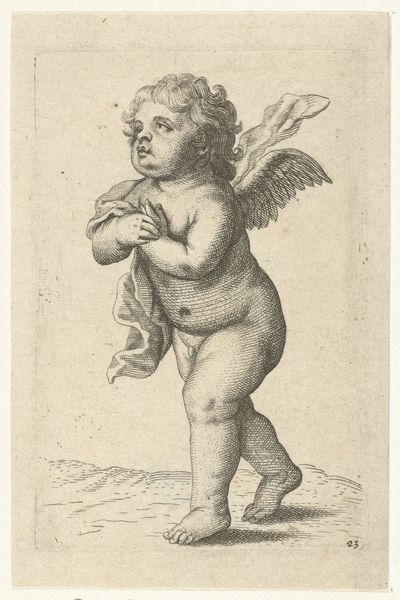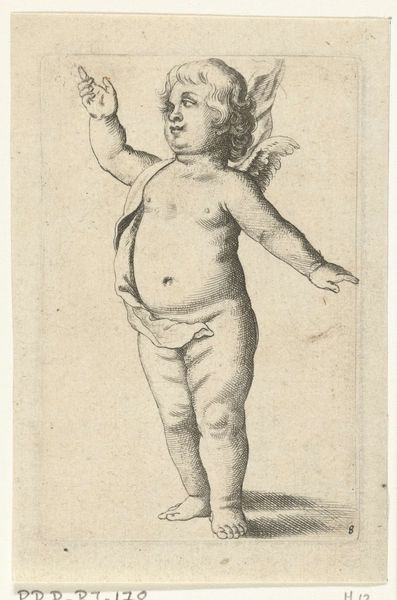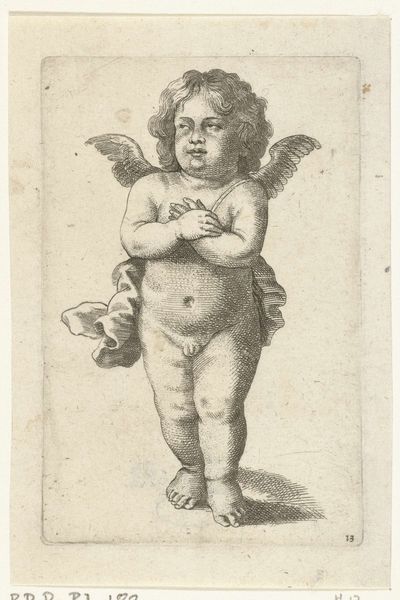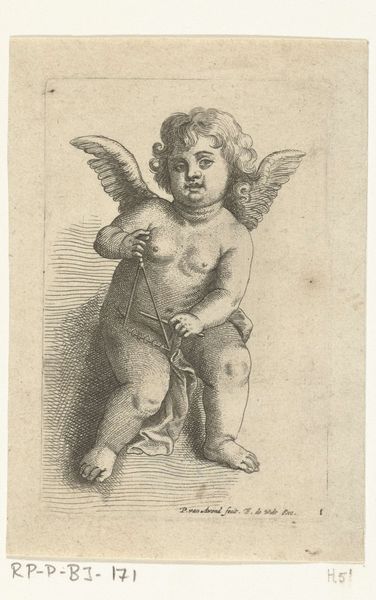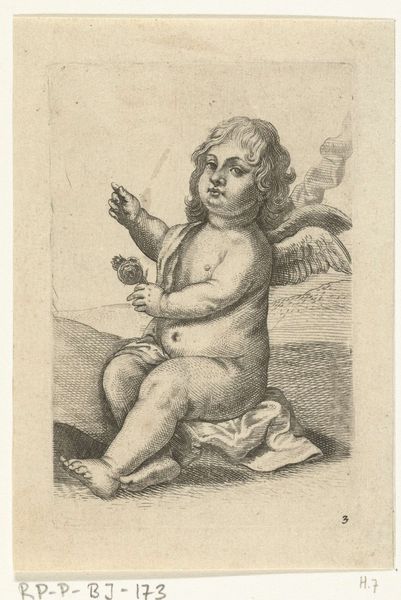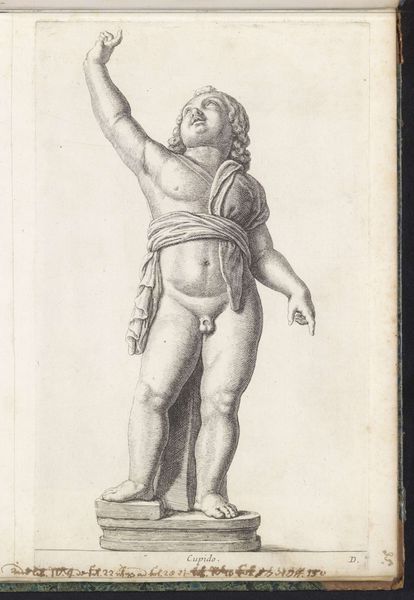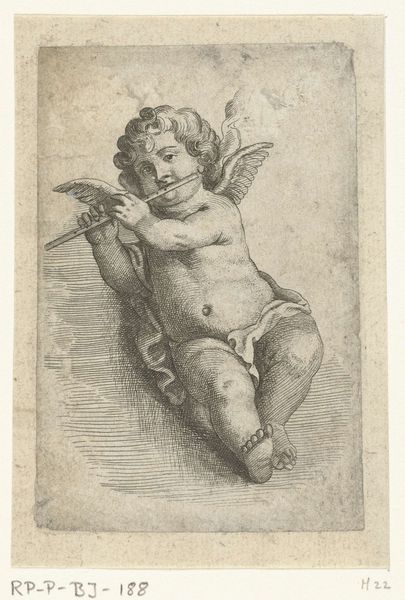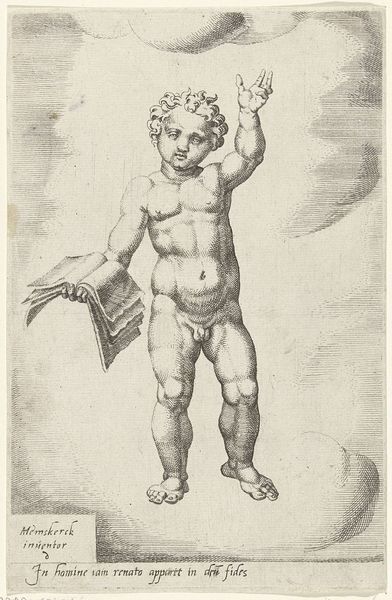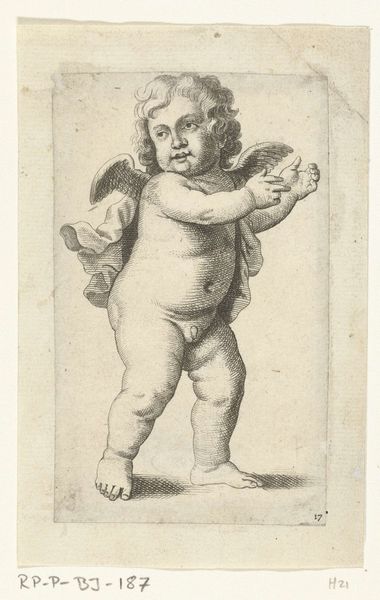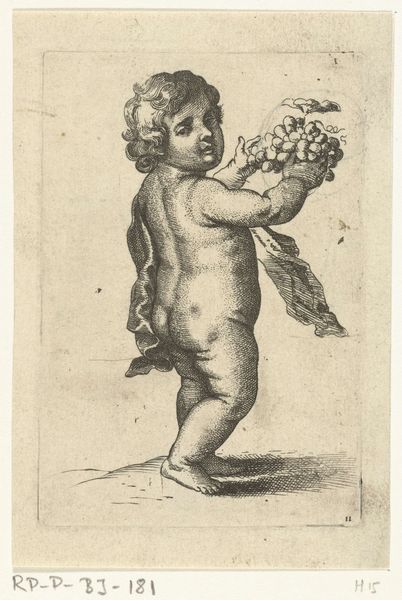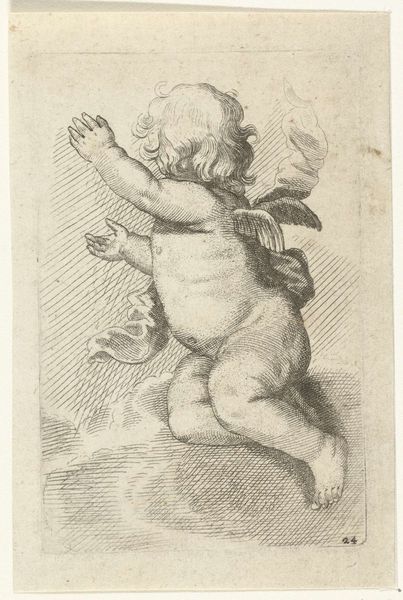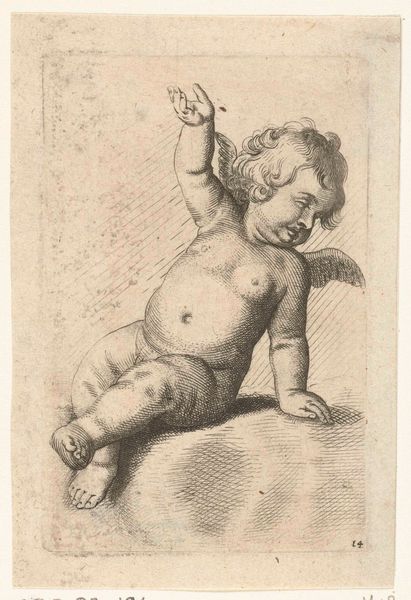
#
pencil drawn
#
toned paper
#
light pencil work
#
pencil sketch
#
personal sketchbook
#
pencil drawing
#
sketchbook drawing
#
portrait drawing
#
pencil work
#
sketchbook art
Dimensions: height 103 mm, width 67 mm
Copyright: Rijks Museum: Open Domain
Pieter van Avont made this small engraving of a standing angel, known as "Staand engeltje," sometime in the first half of the 17th century. Engraving is an intaglio printmaking process, meaning that the image is incised into a plate, usually made of copper. The plate is inked, and then wiped clean, leaving ink only in the engraved lines. The printmaker then presses paper against the plate with great force to transfer the image. Look closely, and you can see the crisp, precise lines that define the angel’s form. The cross-hatching creates shading and volume, giving the figure a sense of depth. Engraving demands considerable skill, patience, and control. The engraver uses a tool called a burin to carve lines into the metal, each cut requiring careful judgment. The result is a testament to the engraver's virtuosity. It’s important to remember the labor involved in producing an image like this. By focusing on the materiality and making, we can appreciate the rich context of this work, and challenge traditional distinctions between art and craft.
Comments
No comments
Be the first to comment and join the conversation on the ultimate creative platform.

